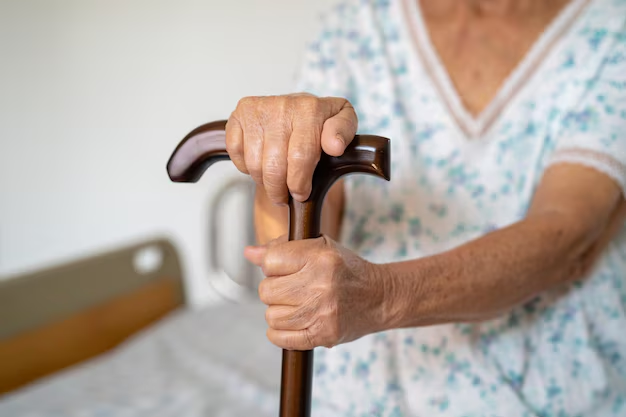Understanding Osteoporosis: Key Factors and Prevention Tips
Osteoporosis, often dubbed the "silent disease," creeps up on individuals without any visible symptoms until a fracture occurs. It's a condition that weakens bones, making them fragile and more susceptible to breaks. But how exactly does one end up with osteoporosis? Let’s delve into the myriad of factors that contribute to its development and explore ways to possibly avert it.
What Causes Osteoporosis?
Osteoporosis is largely influenced by both uncontrollable and controllable factors. While genetic predispositions might not be alterable, lifestyle choices and environmental factors can be managed to a certain extent.
Genetic Predisposition
Our genetics play a significant role in determining bone density and strength. If osteoporosis runs in your family, you might possess a higher risk of contracting the disease. Key genetic factors include:
- Family History: If your parents or siblings have osteoporosis, or if there's a history of fractures in the family, your risk is elevated.
- Ethnic Background: Caucasians and Asians are more prone to osteoporosis compared to African-Americans and Hispanics.
- Body Frame Size: Those with smaller body frames might have less bone mass to draw from as they age.
Hormonal Changes
Hormones act as integral regulators of bone density. Imbalances or changes in hormonal levels can significantly impact bone health:
- Estrogen and Testosterone: A significant drop in estrogen, particularly after menopause, is linked with decreased bone density. For men, lower testosterone levels can also contribute to higher risk.
- Thyroid Hormones: Excessive levels of these hormones can speed up the process of bone loss.
- Other Endocrine Disorders: Adrenal gland malfunctions or an overactive parathyroid can pose risks.
Dietary Factors
The saying, "You are what you eat," holds particularly true when discussing bone health. Nutritional intake is pivotal in maintaining strong bones:
- Calcium Deficiency: Calcium is vital for bone health. Not consuming enough can directly lead to decreased bone density.
- Vitamin D Deficiency: Vitamin D helps your body use calcium, so its lack can hinder calcium absorption.
- Insufficient Protein: Bones contain protein too, and a deficiency can be detrimental.
Lifestyle Choices
A person's daily habits and lifestyle choices are critical in either preventing or accelerating the development of osteoporosis:
- Sedentary Lifestyle: Lack of regular exercise, especially weight-bearing exercises, can exacerbate bone loss.
- Smoking: Tobacco use weakens bones and reduces calcium absorption.
- Excessive Alcohol Use: Consuming more than two alcoholic drinks per day is linked to bone loss.
Medications and Medical Conditions
Certain medications and medical conditions can also elevate the risk of osteoporosis:
- Medications: Long-term use of corticosteroids, antidepressants, and anticonvulsants can increase risk.
- Medical Conditions: Autoimmune diseases such as rheumatoid arthritis and digestive disorders can also contribute to higher risk.
Recognizing Osteoporosis
As osteoporosis often remains undetected until a fracture occurs, understanding the signs and symptoms is crucial:
Subtle Signs
- Receding Gums: Bone loss in the jaw can reflect broader bone density issues.
- Weak Grip Strength: A diminishing grip can be indicative of reduced muscle and bone strength.
- Brittle Nails: Bones and nails share nutritional similarities; weak nails might suggest underlying bone issues.
Fractures and Pain
- Fractures from Minor Falls: The most common sites are the hip, spine, and wrist.
- Back Pain and Postural Changes: Fractures or collapses in the spinal bones can result in back pain and changes in posture.
Preventive Measures
While some risk factors for osteoporosis are beyond our control, others can be effectively managed or mitigated:
Nutrition and Diet
- Boost Calcium Intake: Incorporate foods high in calcium, such as dairy products, leafy greens, and fortified foods.
- Ensure Vitamin D Levels: Sun exposure is a natural source; otherwise, consider supplementation or consuming fortified foods.
- Balanced Diet: Ensure a diet rich in essential nutrients, emphasizing vegetables, fruits, and protein.
Exercise Routine
- Weight-Bearing and Strength Training: Activities like walking, jogging, and lifting weights can enhance bone density.
- Balance and Flexibility Exercises: Yoga and tai chi can help prevent falls by improving balance.
Healthy Lifestyle Choices
- Avoid Smoking and Limit Alcohol: Sidestepping tobacco and moderating alcohol can significantly mitigate bone loss.
- Monitor Bone Health: Regular bone density testing as advised by healthcare providers can help detect and address potential issues early.
Medical and Professional Guidance
- Regular Medical Check-Ups: Understanding your bone density and risk allows for proactive measures.
- Discuss Medications: If on long-term medications posing a risk, consult with a healthcare provider for possible alternatives.
Final Insights
Osteoporosis might be a challenging condition, but understanding its causes and taking proactive measures can help in prevention and management. The journey involves a holistic approach: balanced nutrition, regular exercise, and informed lifestyle choices. By staying vigilant and proactive, it is possible to maintain stronger bones and a healthy life.
Quick Tips for Stronger Bones 🦴
- Prioritize Calcium: Milk, cheese, yogurt, and leafy greens are your allies. 🥛🥬
- Embrace the Outdoors: Regular sun exposure boosts Vitamin D. 🌞
- Stay Active: Incorporate weight-bearing exercises into your routine. 🏋️
- Check Your Meds: Be aware of medications that may affect bone health. 💊
- Routine Tests: Keep up with bone density screenings as recommended. 📊
Proactive choices today can pave the way for healthier bones tomorrow! 🏆

Related Articles
- a Nurse Is Caring For a Client Who Has Osteoporosis.
- a Percutaneous Is Performed To Treat Osteoporosis Related Compression Fractures
- Can Alcohol Cause Osteoporosis
- Can I Do Pilates If I Have Osteoporosis
- Can I Reverse Osteoporosis
- Can Men Get Osteoporosis
- Can Osteoporosis Affect Teeth
- Can Osteoporosis Be Cured
- Can Osteoporosis Be Painful
- Can Osteoporosis Be Reversed